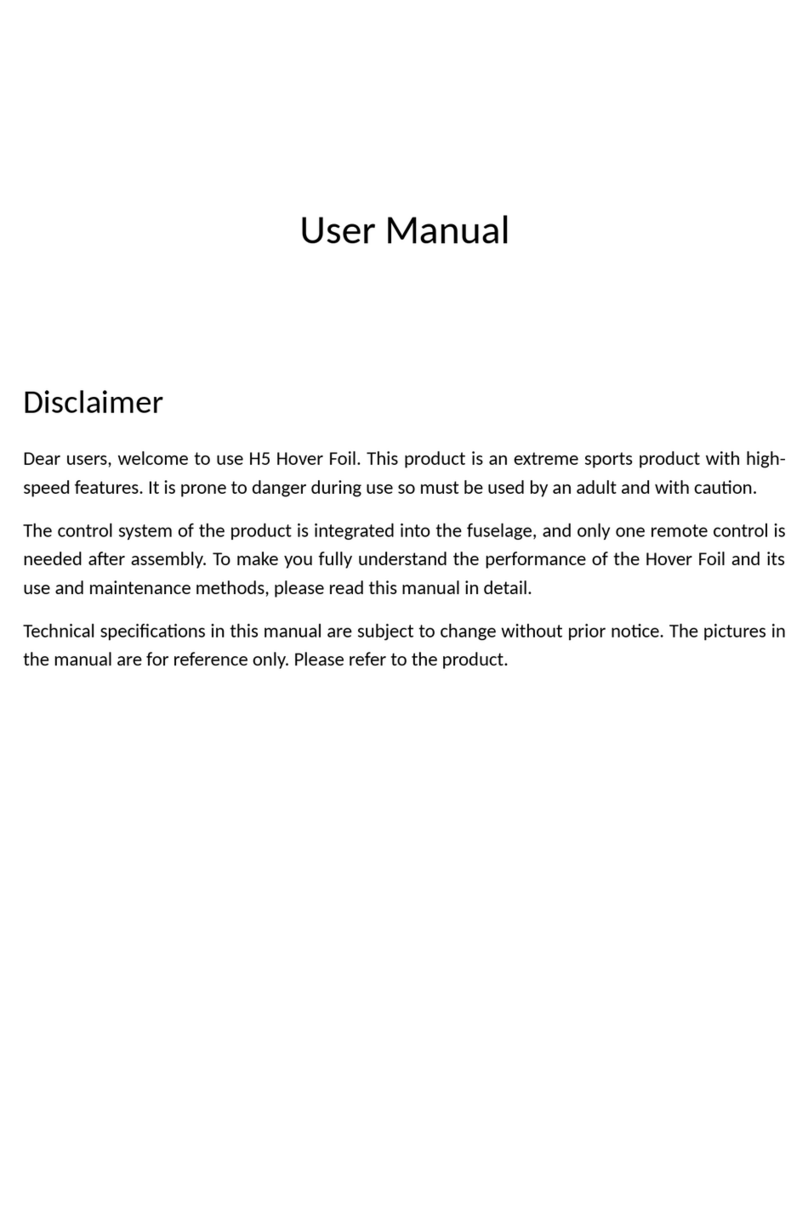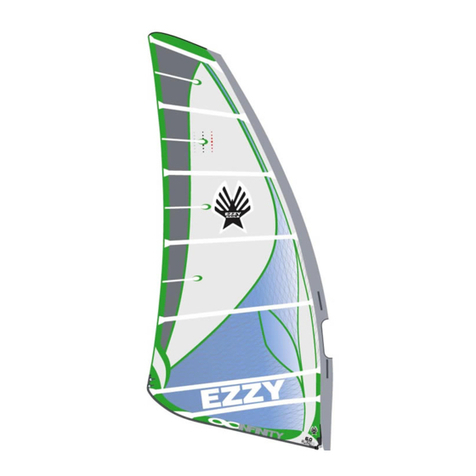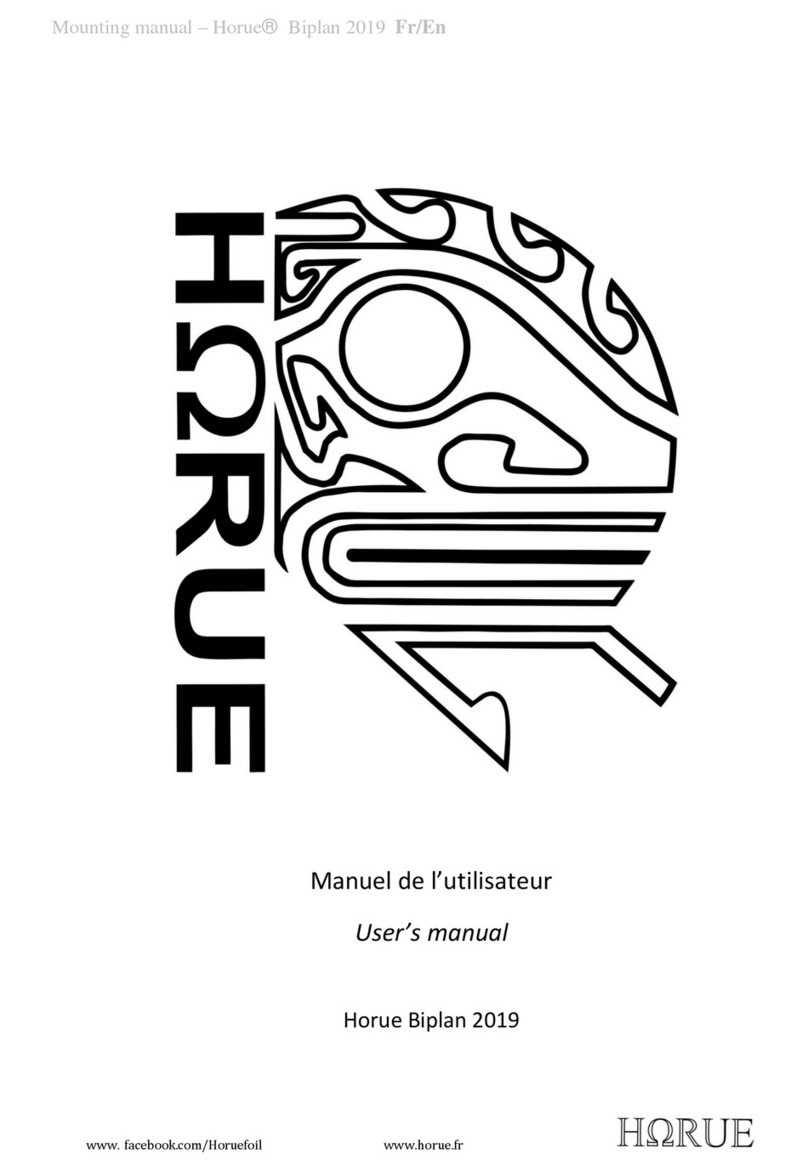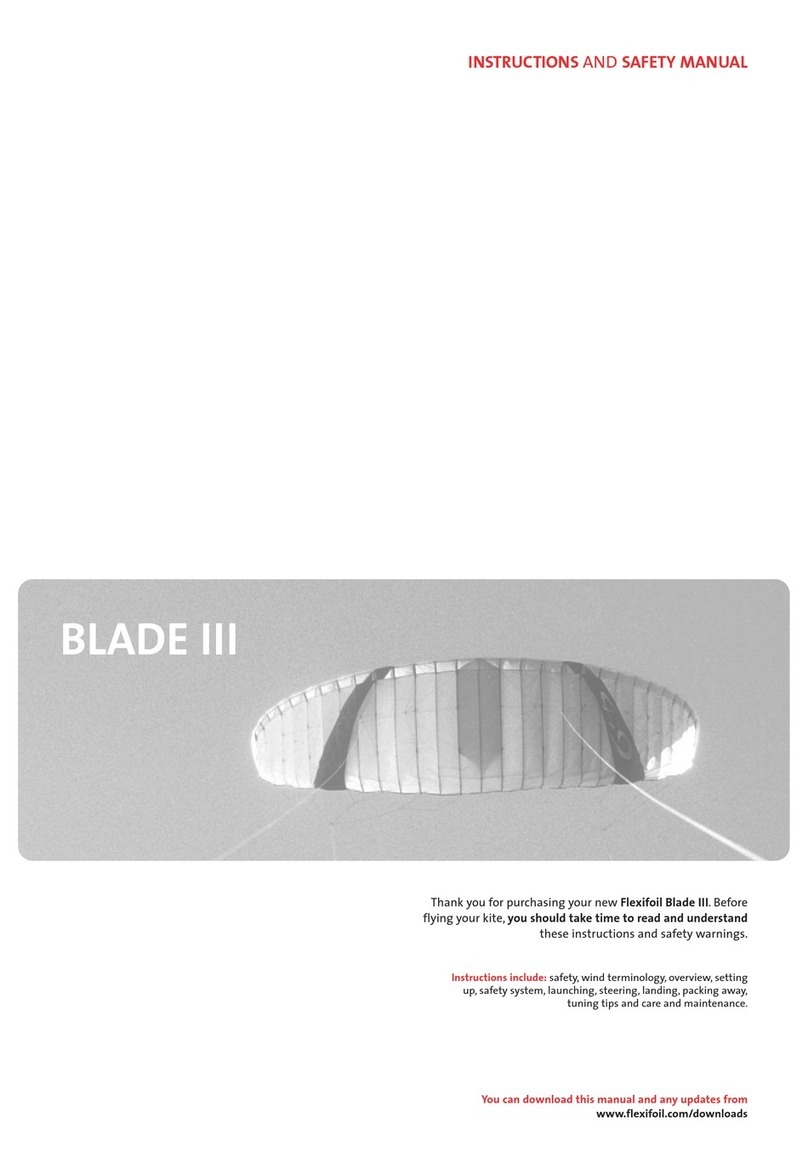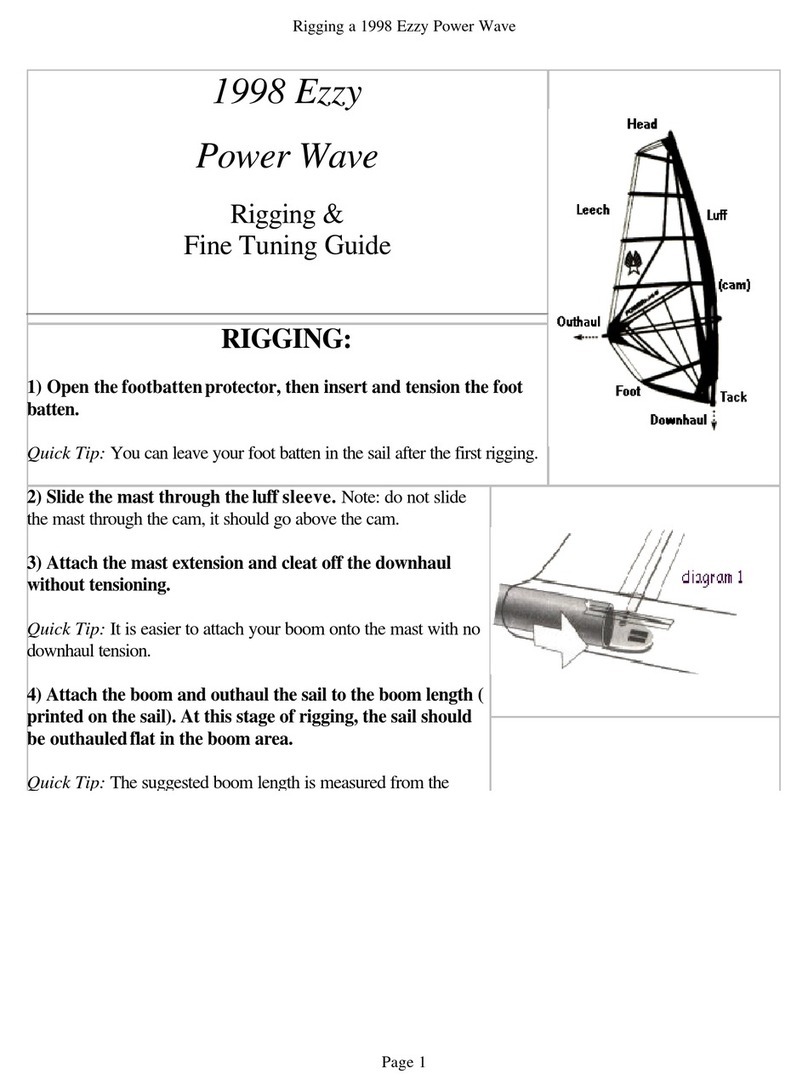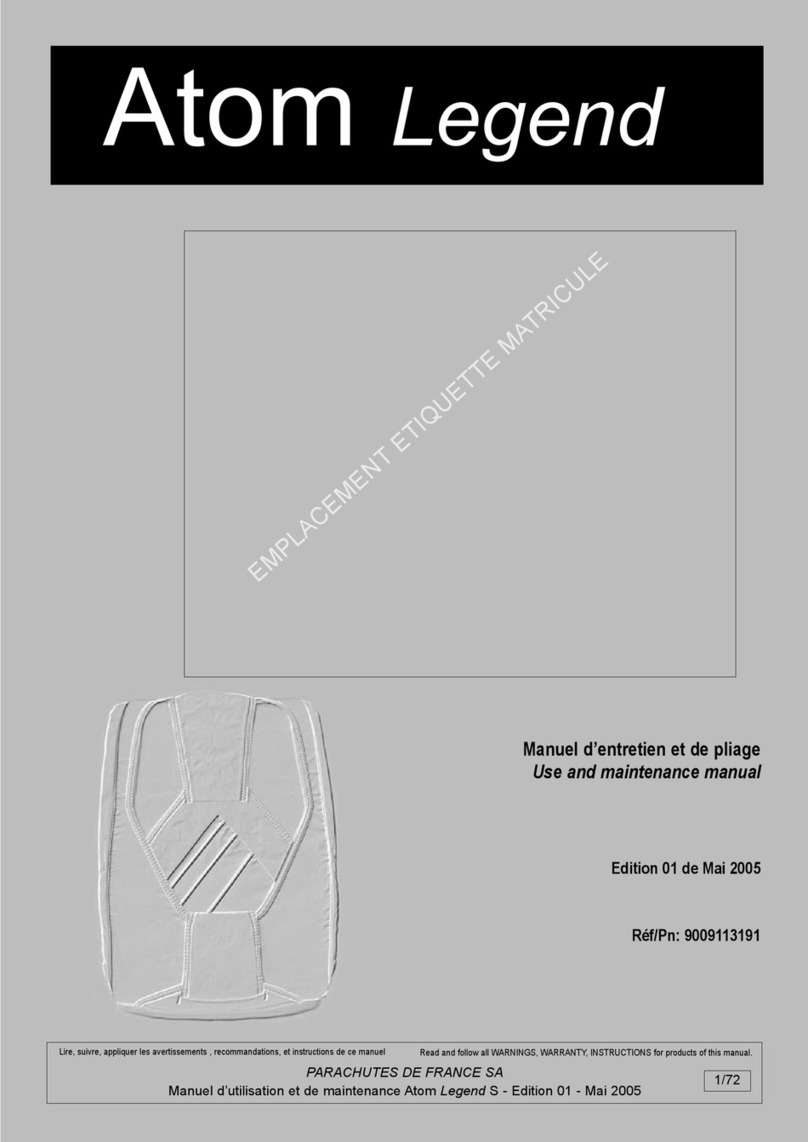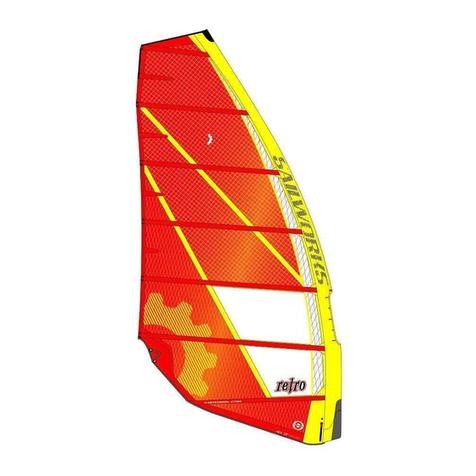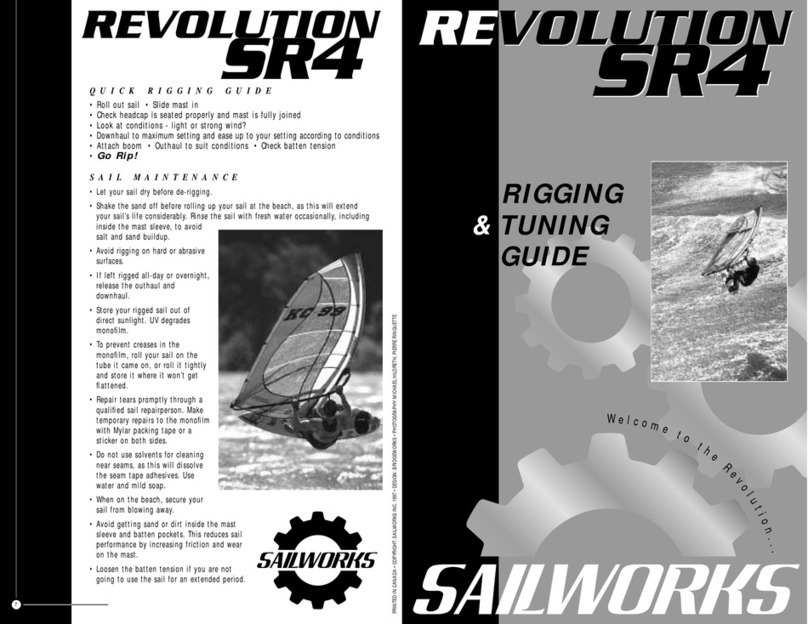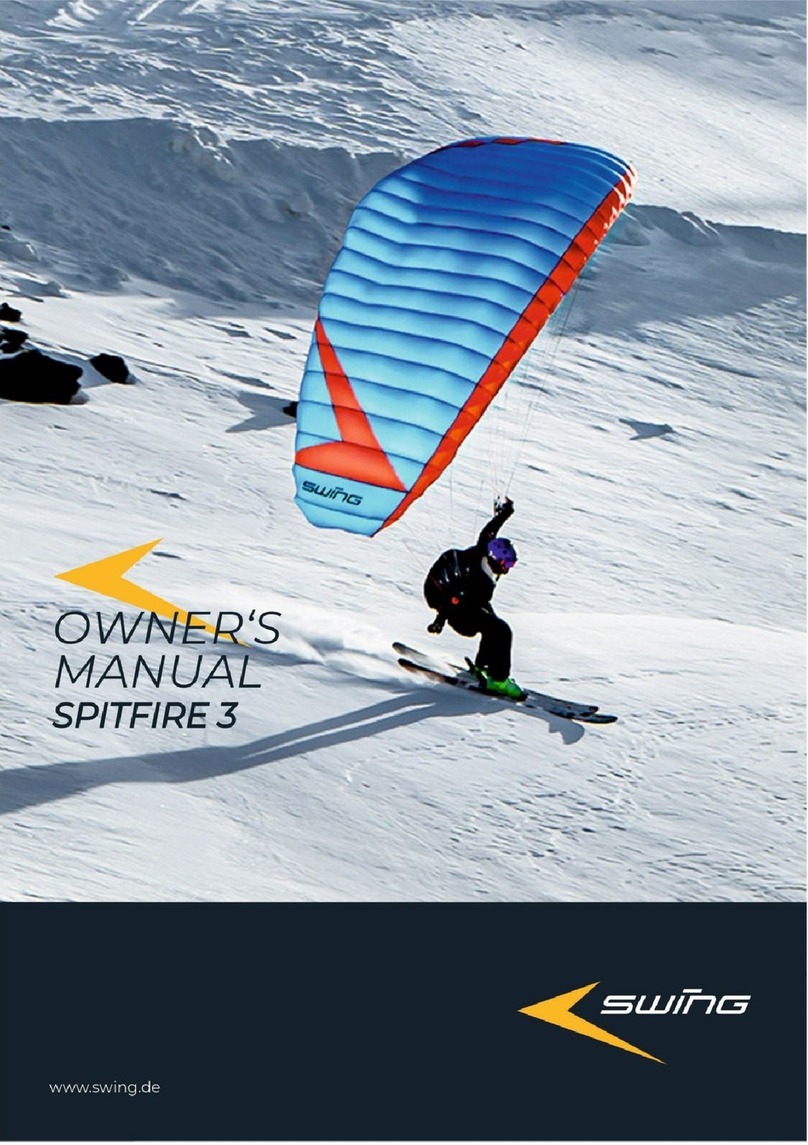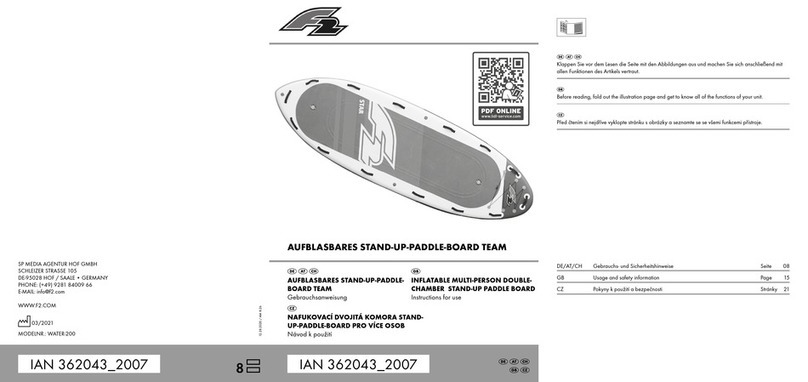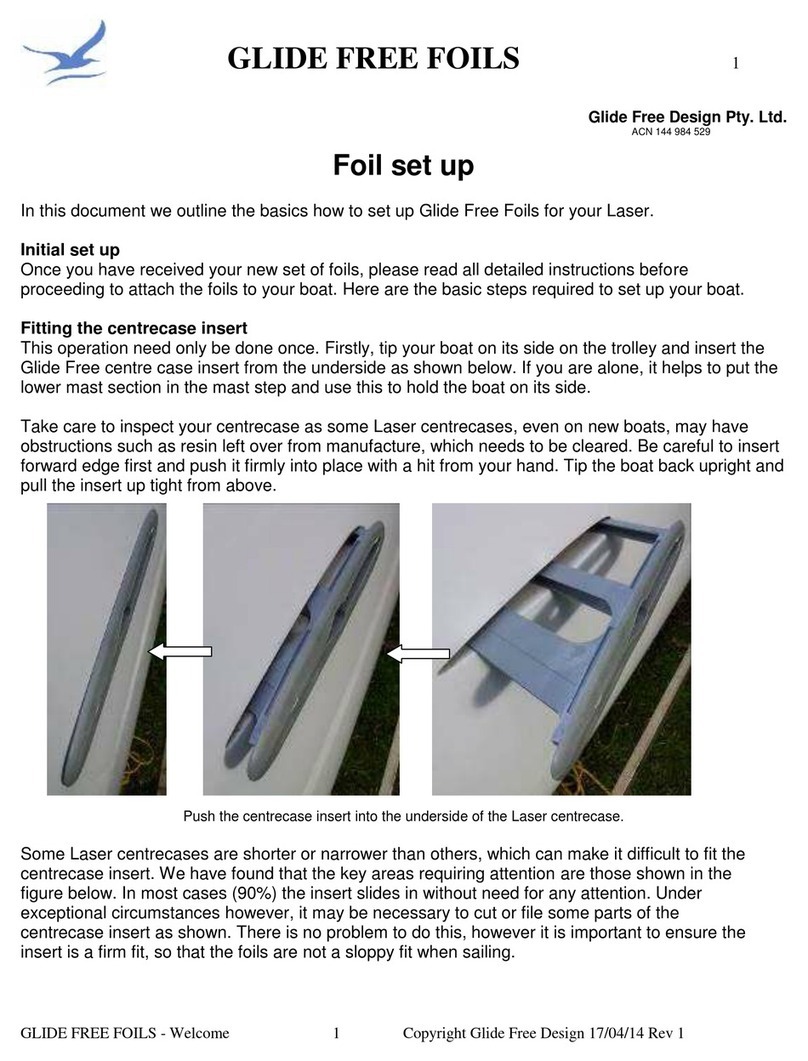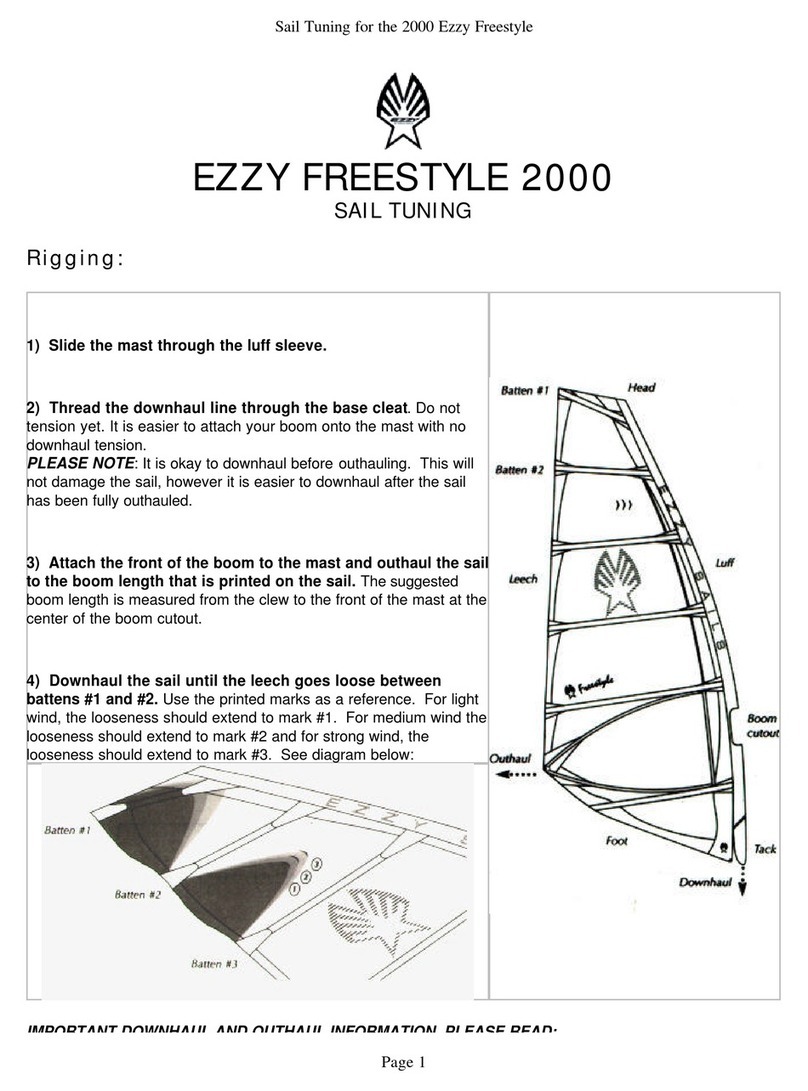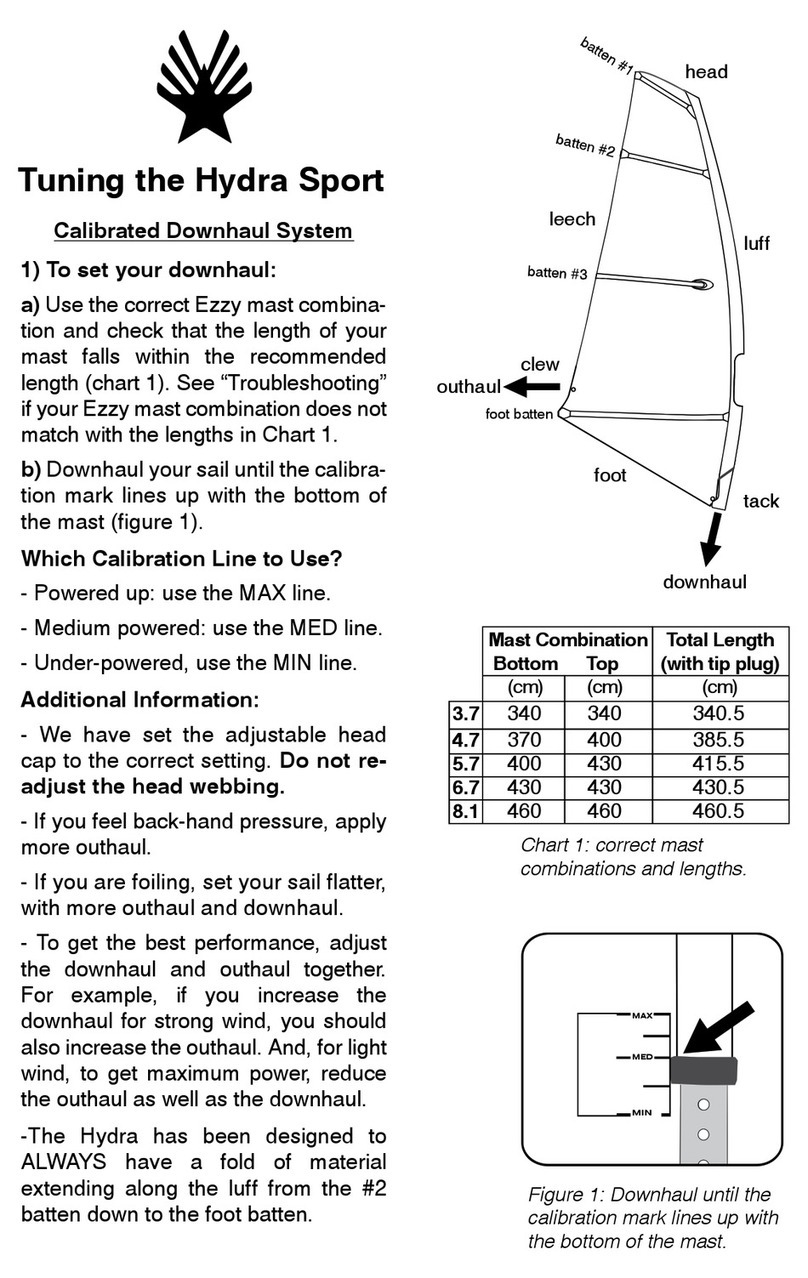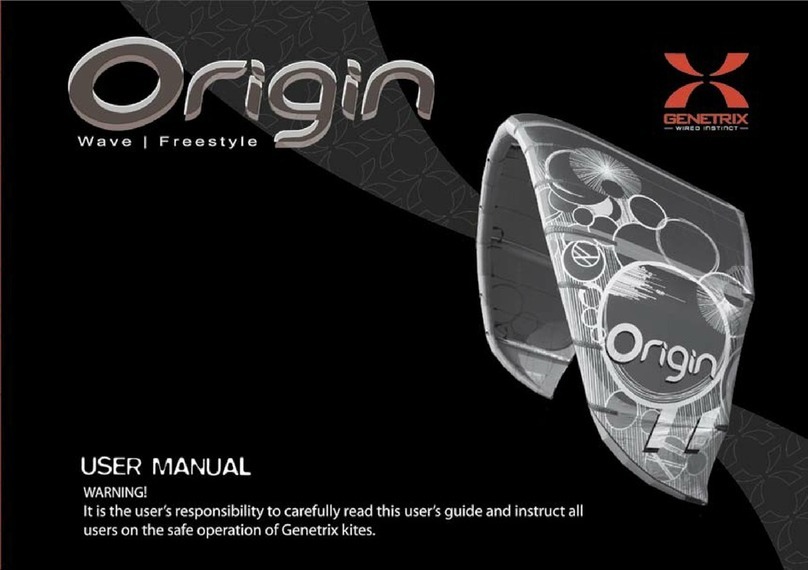ASSEMBLY
AND
RIGGING
1. INSERT THE MAST
Push back the boom-opening flap between the two diamond-
shaped cutouts in the mast sleeve. Guide the mast up the
mast sleeve, coming out the lower boom cutout and back in
the upper boom cutout. Try to keep the cams on the mast, but
don’t worry if they come off – keep inserting the mast. Do
NOT try to re-seat the cams without the boom attached (Any
cams that do come off the mast can easily be re-seated once
the boom is attached and the outhaul pulled). Pull the sail
down the mast in sections by working the mast tip to the top
of the luff before pulling the tack of the sail down to the
base of the mast.
Open the access flap at the top of the mast sleeve and check
that the T-Top stem fitting is seated completely into the mast
tip plug – see photo. The key to easily fitting the T-Top fitting
into the mast is to keep some slack in the mast sleeve just
below the tip of the mast. Do not try to seat the T-Top fitting
while the luff is under tension. Do not downhaul the sail until you are certain the T-Top fitting
is properly seated into the mast. Also check that the two-piece coupling of the mast is joined
completely before downhauling.
2. ATTACH THE MAST BASE
Estimate the amount of mast base
extension needed by subtracting the mast
length from the sail’s luff length. Your
downhaul system should have a low-
friction 6:1 purchase. The triple pulley tack
fitting works best with 4.0 or 5.0 mm pre-
stretched line. To minimize downhauling
friction, replace worn lines with a fresh line
as needed. Lace the downhaul line through
the triple tack pulley: keep the path of line
looping in the same direction each time
you feed it through the tack pulley and
through your base pulley. We recommend a
counter-clockwise direction working from the underside upwards – see photos. Don’t cross the
lines, as this increases friction and makes the downhaul harder to pull. Do not fully downhaul
the sail yet – stop at just "hand-tight".
3. ATTACH THE BOOM
If you plan to use the on-the-fly adjustable outhaul system supplied with the sail, set
that up now. Follow the instructions enclosed with the adjustable outhaul for setup and
use. Adjust your boom to the length specified for the sail. Attach the boom to the mast at the
middle of the boom opening and re-adjust it after the sail is fully rigged. Be careful not to
attach it too high in the boom opening - you must account for the sail to be downhauled
further. Be careful not to pinch the mast sleeve under the boom clamp.
Lace the outhaul through the clew grommet that matches your height preference. Pull the
outhaul completely so the sail is flat, using the recommended boom length. This setting - loose
downhaul and tight outhaul - makes it very easy to put the cams on the mast, and to adjust
the cam tension, if necessary.
4. ADJUST THE VTC CAMS
Your new X-T2comes with Sailworks’ unique VTC
system. This cam system allows you to adjust the
cam tension separately from the batten tension,
and also adapts to fit a variety of mast
diameters.
With the sail assembled as described in steps 1-3
above (hand-tight downhaul, full outhaul), open
the zipper access port at each cam and re-seat any cams that may have
come off the mast as follows: The correct technique is to push down and
back on the batten while pushing up and forward on the cam from the
underside of the sail. Next, pop open the adjustment buckle by pulling up
on the webbing tail (The adjustment buckle "snap-fits" into the side of the
cam). To tension the cam, pull the webbing strap forward (toward the mast) while pushing the
batten down and back from the mast – see photo. As you push down on the batten, work the
slack webbing free by pulling the strap forward and back a few times. Rotate the cam from side
to side with your hand to equalize the strap tension within the cam. The webbing inside the
cams is held very snugly so it may take more than one attempt to pull out all the slack. The
correct setting should tension the mast sleeve snugly without impeding rotation. Set the cams
tight against the mast for optimal control and power in high winds; slightly looser for easier
rotation in light winds.
Snap the buckle firmly back into the side of the cam. It should sit flush with the side of the
cam when closed. If the cams are set very tight, don’t try to close the zippers until the sail is
fully downhauled; if you then cannot close the zippers, you’ve set the cams too tight. Once the
cam tension is set, you don’t need to re-adjust it for each session!
5. TUNE THE DOWNHAUL - CONTROLLING THE SHAPE AND TWIST
(refer also to the tuning chart on the following pages.)
The downhaul controls the sail’s shape, twist and performance. Discover its effect by slowly
pulling and releasing the line. If necessary, use an easy-rig or downhauling tool so it is easier to
pull hard. Observe the change in depth and tension of the leading edge (front 1/3 of the sail),
and the flattening and loosening of the head area (upper leech between batten #2 & #3) as
more downhaul is pulled. Specifically notice the change in the angles, or twist, of the battens;
the top batten should open to leeward the furthest—called "progressive twist. The twist profile
is cut into the sail, but is ultimately controlled by the downhaul tension. More downhaul
induces more twist; less downhaul allows less twist. Twist improves sail efficiency and makes it
easier to control.
The ideal downhaul setting gives a
tight luff and a lean (not blunt)
entry, and the leech area between
the top two battens should
become loose. This static looseness
of the leech is normal and will pull
tight as the sail twists open under
wind load. Follow the reference
marks on the sail for guidelines on
downhaul tension (See the photos
on the next page). Once you’re
familiar with the correct downhaul
setting, re-check the mast base
height. If necessary, re-adjust it so
that the tack pulley sits very close
to the mast base
